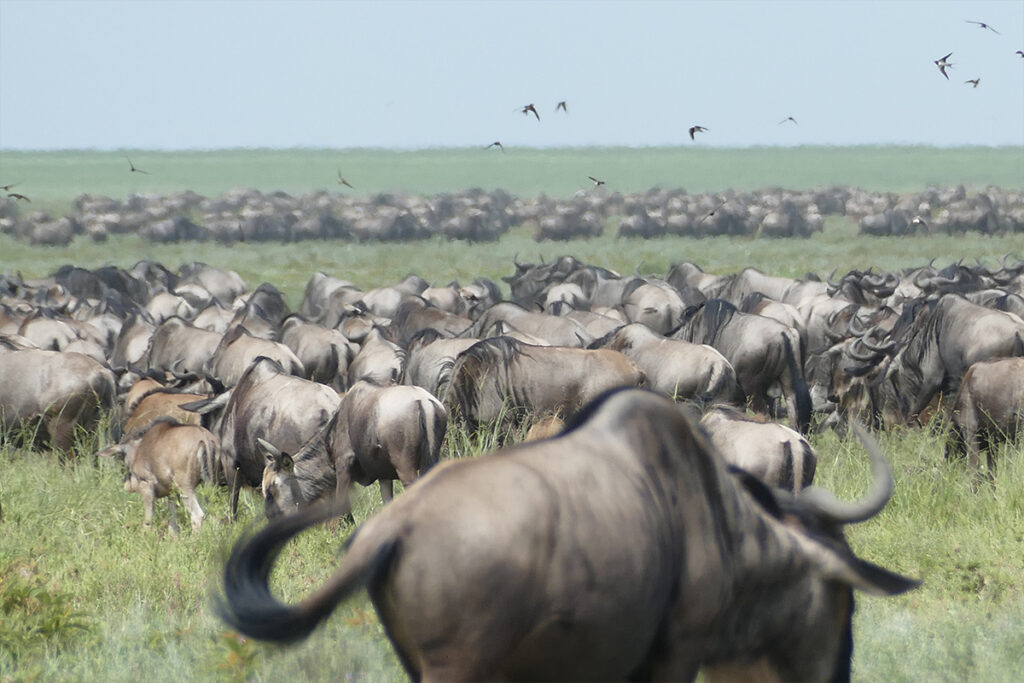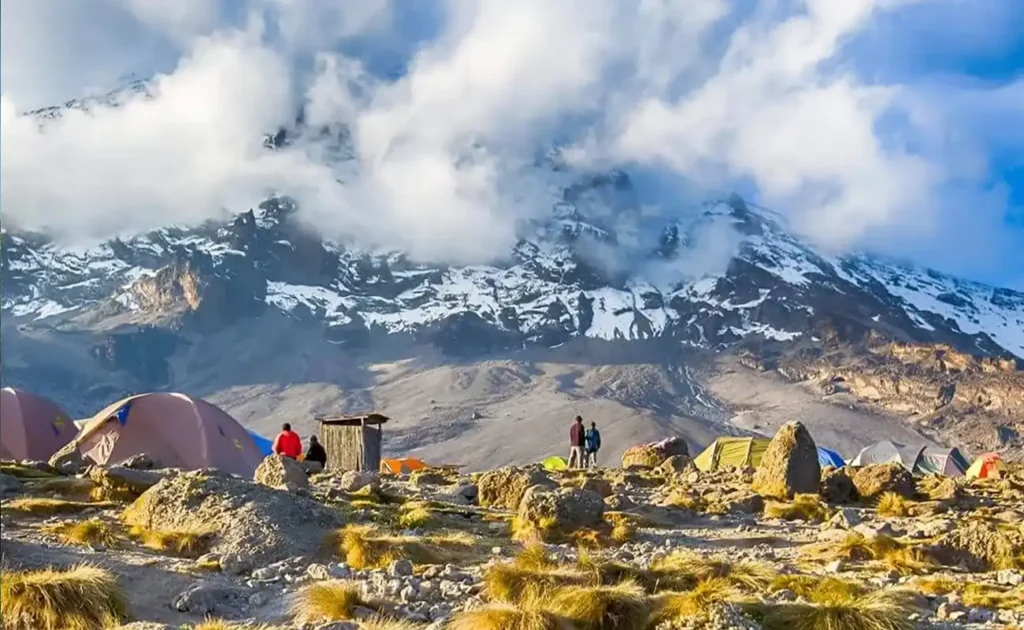Reaching the summit of Kilimanjaro is a dream realized by thousands each year, but not without a tangible challenge: acclimatization. Without adequate adjustment to the altitude, climbers may face significant health risks. Some even abandon their quest due to altitude sickness, highlighting the critical importance of acclimatization strategies.
Kilimanjaro’s diverse routes reveal an optimal acclimatization approach: “climb high, sleep low.” Historical accounts underscore this technique, which aligns with the understanding that gradual exposure allows the body to adapt to reduced oxygen levels. In fact, statistics show climbers who incorporate additional rest days increase their summit success rate by up to 85%, illustrating just how crucial pacing is in this rigorous ascent.

Importance of Acclimatization during a Kilimanjaro Climb
Acclimatization is crucial when climbing Mount Kilimanjaro because it helps climbers adjust to the high altitude. The mountain’s summit stands at 19,341 feet, where oxygen levels are much lower than at sea level. Without proper acclimatization, climbers risk experiencing Acute Mountain Sickness (AMS). Symptoms can include headaches, dizziness, and nausea. Severe cases can lead to life-threatening conditions such as High Altitude Pulmonary Edema (HAPE).
Good acclimatization involves ascending slowly and giving the body time to adapt. Many climbers use the “climb high, sleep low” strategy. This means they hike to a higher altitude during the day but sleep at a lower elevation. This practice allows the body to get used to the thinner air gradually. Spending extra rest days also boosts acclimatization success rates up to 80%.
Proper hydration and nutrition play key roles in acclimatization. Drinking plenty of water helps maintain oxygen levels in the blood. Eating high-energy foods keeps the body fueled for the tough climb. Avoiding alcohol and caffeine is also recommended. These can dehydrate the body, worsening altitude sickness.
Using acclimatization-friendly routes on Kilimanjaro is another effective strategy. For instance, the Lemosho route and the Northern Circuit offer longer durations for gradual acclimatization. These routes spread the ascent over more days, helping climbers adjust better. Well-trained guides are also crucial as they monitor climbers’ health and provide valuable advice.
Health Risks due to Inadequate Acclimatization
Failing to acclimatize properly poses several health risks while climbing Kilimanjaro. One of the main concerns is Acute Mountain Sickness (AMS), which can hit climbers even at low altitudes. Its symptoms often start mildly, with headaches and fatigue. If ignored, these symptoms can rapidly worsen, leading to severe discomfort. In extreme cases, AMS can escalate to more serious conditions.
Two major life-threatening conditions from poor acclimatization are High Altitude Pulmonary Edema (HAPE) and High Altitude Cerebral Edema (HACE). HAPE involves fluid collecting in the lungs, making breathing difficult. On the other hand, HACE leads to swelling in the brain, causing severe confusion. Both conditions can develop swiftly, requiring quick descent and medical attention. Ignoring symptoms increases the risk of these serious illnesses.
Another risk from delayed acclimatization is decreased physical performance. The lack of oxygen reduces muscle efficiency, making climbers feel exhausted faster. This exhaustion can lead to poor decision-making and increased accident risks. Climbing Kilimanjaro requires peak physical condition. Therefore, understanding and managing these risks is essential.
Being aware of the signs of poor acclimatization helps climbers seek timely intervention. Guides often carry pulse oximeters to measure oxygen levels in the blood. This simple tool assists in early detection of altitude-related issues. Moreover, climbers are encouraged to communicate any concerns promptly. Early intervention often prevents conditions from worsening and protects health during the climb.
Techniques of Acclimatization for a Kilimanjaro Climb
Gradual ascent is a key technique for successful acclimatization. Climbers should aim for no more than 1,000 feet of elevation gain per day. This slow pace allows the body to adjust to reduced oxygen levels. Additionally, incorporating rest days during the climb can greatly aid in this adjustment. Longer routes, like the Lemosho, provide ample time for gradual adaptation.
Many climbers find the “climb high, sleep low” method beneficial. This involves ascending to a higher altitude during the day and descending to sleep at a lower level. The method encourages the body to produce more red blood cells. This process helps transport oxygen more efficiently. Consistently practicing this can improve overall climber performance.
Proper hydration plays an essential role in acclimatization. Drinking plenty of water helps maintain bodily functions at high altitudes. Staying hydrated supports better blood flow, delivering oxygen to the brain and muscles. Avoiding caffeinated drinks and alcohol is also recommended. Both can cause dehydration, making acclimatization more difficult.
Using specific gear designed for high-altitude trekking enhances acclimatization. Gear like trekking poles can assist climbers by reducing the strain on muscles. Footwear with good ankle support ensures stability on uneven terrain. Additionally, wearing layers of breathable clothing helps regulate body temperature. Packing these essentials is part of a smart acclimatization strategy.
Evidence of Successful Acclimatization in Kilimanjaro Climbs
Successful acclimatization on Kilimanjaro often translates to climbers reaching the summit without major health issues. Statistics indicate that climbers who follow a structured acclimatization plan have a higher summit success rate. Many tour companies report a success rate of over 85% when acclimatization strategies are applied. These figures highlight the importance of proper acclimatization in achieving climbing goals. Moreover, climbers often share positive experiences when they take their time to adjust.
Personal testimonies from successful climbers show that those who take extra acclimatization days feel stronger and more capable. Climbers frequently mention that by allowing their bodies to adapt, they enjoy the journey more. The absence of altitude sickness symptoms like headaches and nausea contributes to this experience. These healthy climbers often influence others to follow similar strategies. Overall, a positive acclimatization experience can inspire future climbers.
Scientific studies back the benefits of planned acclimatization. Researchers have found a link between acclimatization time and the production of red blood cells. An increase in red blood cell count significantly improves oxygen delivery throughout the body. This fact explains why climbers feel less tired and more energized. These scientific findings support the observed success of gradual acclimatization techniques.
Comparative data from different Kilimanjaro routes also demonstrate the impact of acclimatization. For instance, routes like the Rongai and Machame offer varying timeframes for the climb. Climbers choosing longer routes generally experience fewer health issues. A table comparison of routes shows a correlation between ascent duration and success rates. Understanding route options helps climbers choose the best acclimatization approach.
Organized acclimatization programs by guiding companies provide structured support for climbers. These programs often include rest days, acclimatization hikes, and health monitoring by experienced guides. Ensuring a gradual climb pace together with health check-ins fosters a supportive environment for climbers. Many clients value this comprehensive approach. Such programs improve climbers’ confidence in their ability to reach the summit safely.
Frequently Asked Questions
Discover the intricacies of acclimatization while climbing Kilimanjaro. Here, we tackle common questions about making your ascent successful and safe.
1. Why is acclimatization important during a Kilimanjaro climb?
Acclimatization is vital because it helps your body adjust to lower oxygen levels. As you climb higher, the air becomes thinner, making it harder to breathe. Without proper acclimatization, you risk developing altitude sickness, which can range from mild discomfort to severe, life-threatening conditions.
Successfully acclimatizing allows you to climb at a steady pace and enjoy the experience. It reduces the chance of needing to descend quickly due to health issues. By following acclimatization strategies, like taking rest days, your climb becomes both safer and more enjoyable.
2. What are the signs of poor acclimatization?
Poor acclimatization is often marked by physical symptoms. Common signs include headaches, dizziness, fatigue, and difficulty sleeping. As your body struggles to adjust to the altitude, you may also feel nauseous or lose your appetite, making it critical to notice these early symptoms.
If ignored, these signs can develop into more severe issues, like fluid in the lungs or brain swelling. These conditions require immediate medical attention and rapid descent. Recognizing symptoms early ensures you can address them before they worsen, ensuring a safer climb.
3. What role do guides play in the acclimatization process?
Guides are crucial for a safe acclimatization process on Kilimanjaro. They are trained to identify symptoms of altitude sickness early and provide medical assistance. Guides also manage the pace of the climb, ensuring it aligns with acclimatization needs and safety.
Additionally, guides plan the route to include rest days, allowing the body to adjust to the altitude gradually. Their experience and knowledge create a supportive environment, significantly reducing the risks associated with high-altitude trekking.
4. How can climbers stay motivated during the acclimatization period?
Staying motivated during acclimatization involves setting small goals and celebrating progress. Each day brings you closer to the summit, and focusing on enjoying the journey can boost morale. Engaging with fellow climbers also provides encouragement and adds a fun social element.
Keeping a positive mindset is key. Remind yourself of the stunning views and the achievement awaiting at the top. Photography, journaling, or just appreciating the scenery can keep spirits high during slower acclimatization days.
5. Are specific routes better for acclimatization on Kilimanjaro?
Certain routes on Kilimanjaro offer better acclimatization opportunities due to their longer itineraries. For instance, the Lemosho and Northern Circuit routes are recommended for this purpose. These routes provide gradual altitude gain, allowing additional time for the body to adjust.
Choosing the right route can significantly influence acclimatization success. Longer routes not only improve chances of a safe climb but also enhance overall experience. Taking the time to select a route that provides ample acclimatization is a smart strategy for a successful ascent.
Conclusion
Successful acclimatization is more than just a crucial aspect of climbing Mount Kilimanjaro; it’s what ensures the journey is safe and enjoyable. By understanding and actively implementing acclimatization techniques, climbers can significantly reduce risks. This preparation is what transforms a challenging trek into a memorable achievement.
Engaging with experienced guides and choosing routes with gradual elevation gain are vital steps. Proper nutrition, hydration, and pacing are equally important. Ultimately, careful acclimatization paves the way for a triumphant and unforgettable ascent to the roof of Africa.



